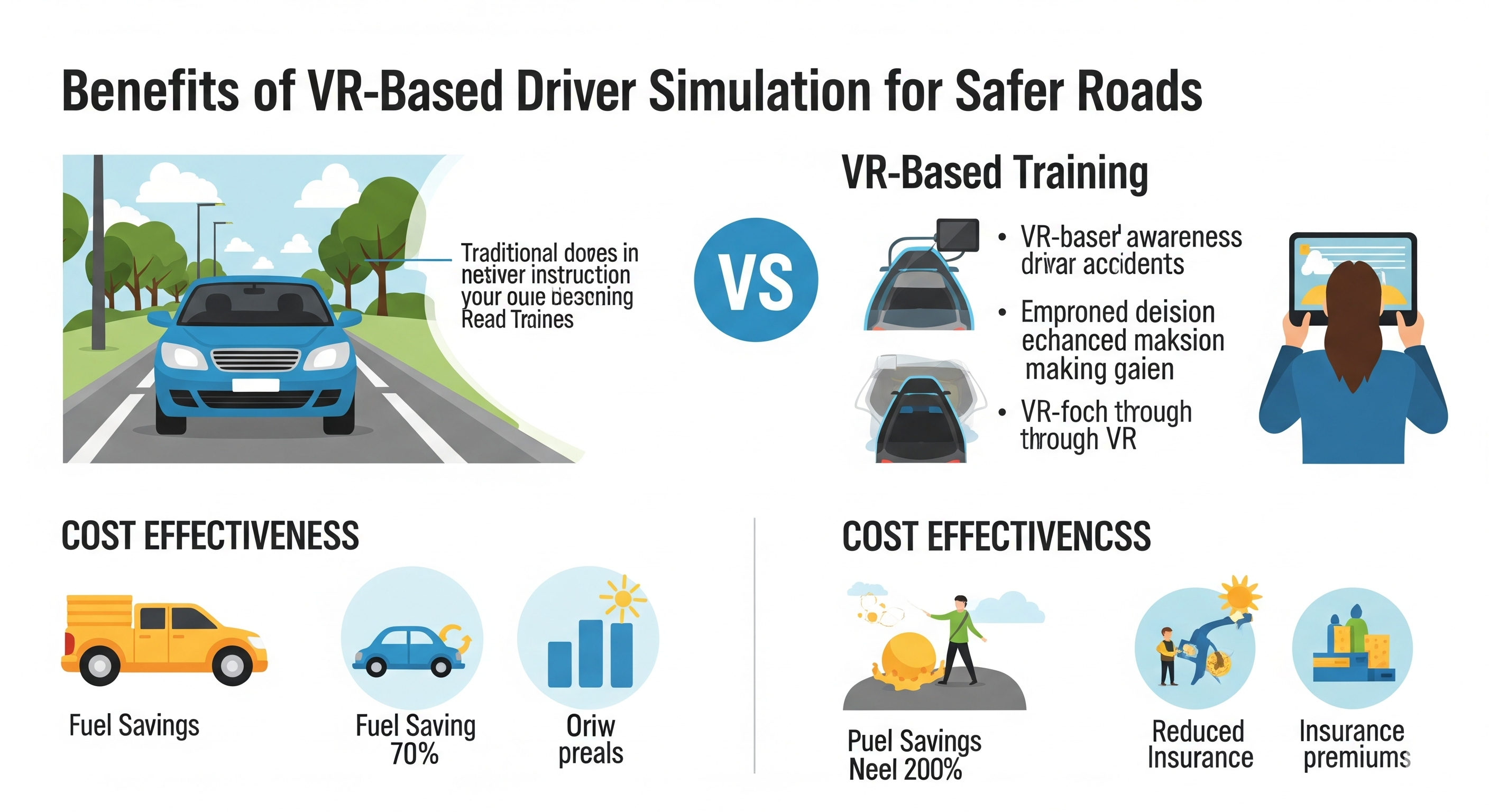In India’s rapidly evolving transport landscape, traditional driving training is no longer enough to keep up with the complexity of modern roads. That’s where Virtual Reality (VR)-based driver simulation steps in—offering an immersive, cost-effective, and highly impactful way to train drivers.
At Hubert Ebner India, we combine cutting-edge VR technology with proven behavioral science to help drivers experience real-life scenarios in a safe, controlled, and repeatable environment.
Let’s explore the key benefits of using VR-based simulations for driver training across industries.
🎯 1. Realistic and Risk-Free Learning
VR technology creates hyper-realistic driving scenarios—urban traffic, expressways, mountain terrain, foggy weather, or night driving—without exposing drivers to real-life risks.
Drivers can practice:
- Sudden brake situations
- Overtaking techniques
- Blind spot awareness
- Emergency vehicle behavior
This immersive training helps them build muscle memory and sharpen reflexes, all in a zero-consequence environment.
🧠 2. Faster Learning & Better Retention
VR activates multiple senses and engages the brain more deeply than passive classroom sessions or videos. Studies show that VR learners retain up to 75% more information compared to traditional methods.
When a driver sees a mistake and experiences its consequences—even virtually—it makes a lasting impression that improves real-world driving behavior.
📉 3. Reduction in Real-World Accidents
Several corporates that implemented VR-based simulation with Hubert Ebner India have seen:
- 30–60% fewer incidents involving trained drivers
- Improved hazard perception
- Increased driver confidence, especially among new recruits
- Enhanced ability to navigate high-pressure situations (e.g. sudden traffic, jaywalking pedestrians)
🛠️ 4. Customizable Training Modules
With VR, we can customize training for different vehicle types and roles, including:
- Heavy Commercial Vehicle (HCV) drivers
- Light Commercial Vehicle (LCV) drivers
- Bus and school van operators
- Corporate fleet executives
- Emergency services and ambulance drivers
Modules can also be tailored to region-specific challenges like left-hand driving, narrow lanes, or wildlife zones.
📊 5. Objective Performance Evaluation
Unlike traditional assessment, VR simulation provides data-driven insights into:
- Reaction time
- Braking patterns
- Lane discipline
- Mirror usage and attention span
- Decision-making in high-risk situations
This allows fleet managers and trainers to pinpoint weaknesses and offer targeted improvements.
🧑🏫 6. Improved Trainer Efficiency
With limited trainers and large fleets, personalized attention can be challenging. VR allows one trainer to:
- Monitor multiple participants
- Replay scenarios
- Highlight mistakes visually
- Provide instant feedback
This increases training efficiency and consistency across the board.
🌍 7. Eco-Friendly & Scalable
VR eliminates the need for fuel, test tracks, or live vehicles. It’s not only greener, but also highly scalable—ideal for training hundreds of drivers across different cities at once.
Whether it’s for a pan-India logistics company or a city-wide cab aggregator, VR modules can be replicated and deployed effortlessly.
✅ Hubert Ebner’s VR Training Setup
At Hubert Ebner India, we provide:
- Mobile VR driver simulation units
- On-site setup for corporate training days
- Language-customized modules (English, Hindi, regional languages)
- Post-training reporting & analytics
🛣️ Join India’s Road Safety Revolution
If you’re a fleet operator, government agency, or corporate CSR leader, investing in VR-based driver simulation is not just smart—it’s essential. Reduce liability, protect lives, and build a safety-first culture.
📞 Contact Hubert Ebner India
Let’s take your driver training program into the future—with immersive, life-saving technology.




